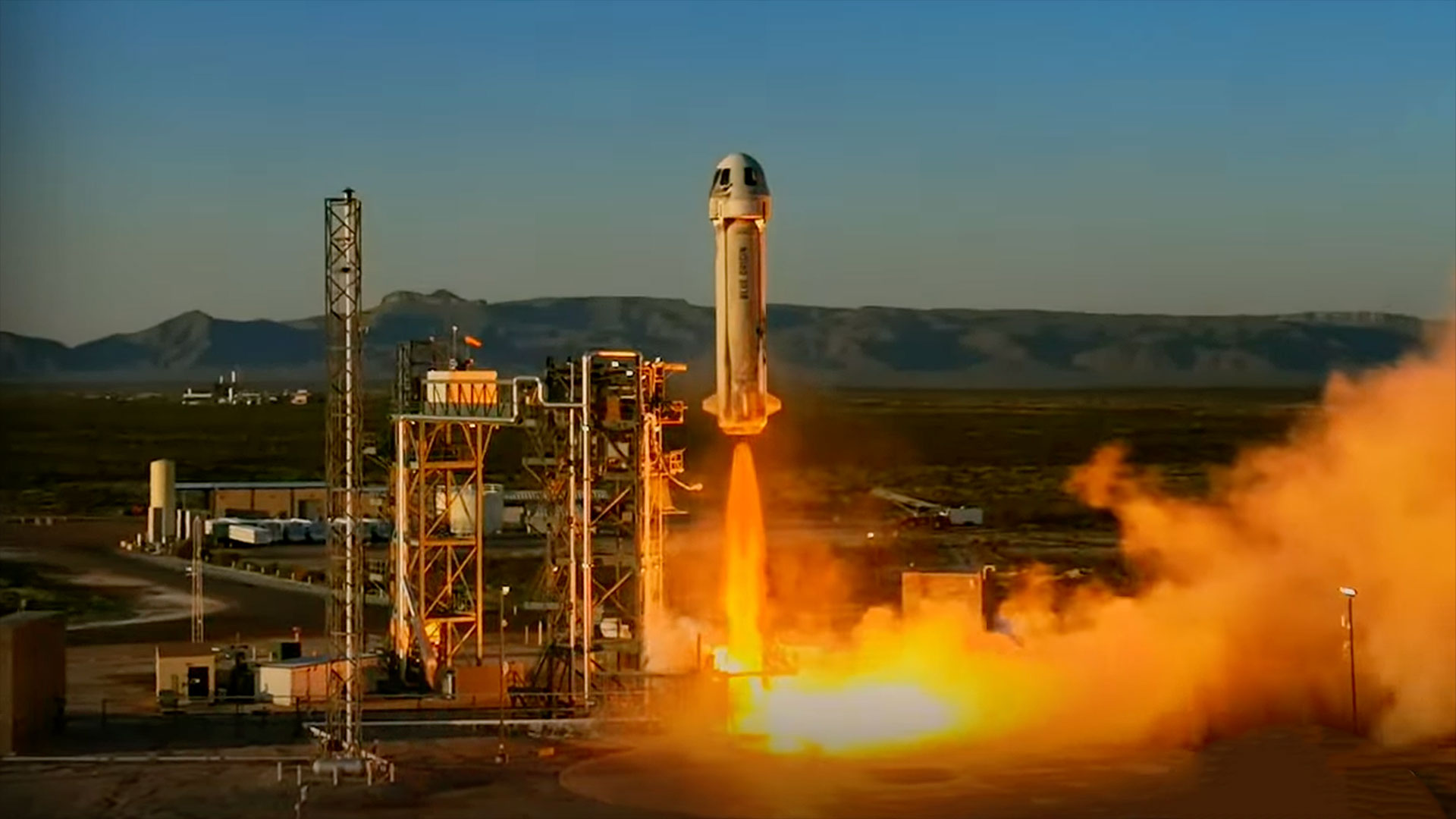Newborn star (unsuccessfully) plays 'hide-and-seek' in gas cloud

Peekaboo! We see you, little star.
While you can't easily see the celestial object inside all of this gas surrounding it, a new Hubble Space Telescope image shows a huge plasma jet emanating from the young star.
The stream of gas comes from a young star called Parengo 2042, growing up in the usual disk of debris that surrounds stellar nurseries. This jet of plasma, some two light-years long, is also being influenced by the environment around it, NASA said in a statement.
"The gas of the jet has been ionized until it glows by the radiation of a nearby star, 42 Orionis. This makes it particularly useful to researchers because its outflow remains visible under the ionizing radiation of nearby stars," NASA stated.
Related: The best Hubble Space Telescope images of all time!
And just like many youngsters playing hide-and-seek, the jet was made accidentally visible — not because of movement, but because of the process of ionization, or stripping away charged electrons from the gas.
"Typically," the agency continued, "the outflow of jets like this would only be visible as it collided with surrounding material, creating bright shock waves that vanish as they cool."
Breaking space news, the latest updates on rocket launches, skywatching events and more!
The image shows a complex environment rendered in different colors in image processing. Red and orange show off the jet and glowing gas. Blue ripples are bow shocks coming from 42 Orionis, not visible in the image. "Bow shocks happen in space when streams of gas collide, and are named after the crescent-shaped waves made by a ship as it moves through water," NASA said.
NGC 1977 is part of three nebulae that make up the Running Man Nebula, in the constellation Orion. This image was captured before a synchronization glitch disrupted Hubble observations Oct. 23, but the 31-year-old observatory is slowly getting its instruments back online. Astronaut service missions have been impossible since the retirement of the space shuttle in 2011.
Follow Elizabeth Howell on Twitter @howellspace. Follow us on Twitter @Spacedotcom or on Facebook.

Elizabeth Howell (she/her), Ph.D., was a staff writer in the spaceflight channel between 2022 and 2024 specializing in Canadian space news. She was contributing writer for Space.com for 10 years from 2012 to 2024. Elizabeth's reporting includes multiple exclusives with the White House, leading world coverage about a lost-and-found space tomato on the International Space Station, witnessing five human spaceflight launches on two continents, flying parabolic, working inside a spacesuit, and participating in a simulated Mars mission. Her latest book, "Why Am I Taller?" (ECW Press, 2022) is co-written with astronaut Dave Williams.
